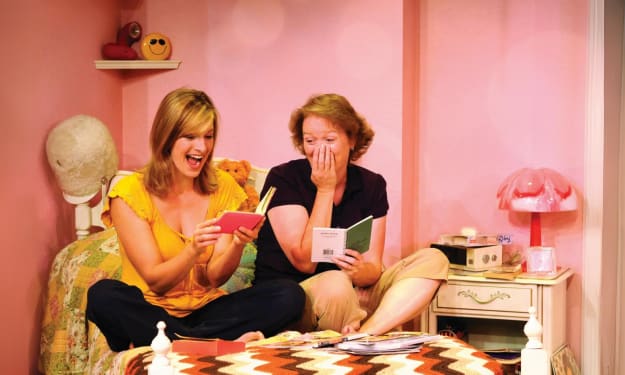One Woman's Impossible Life
Kenji Mizoguchi's 'The Life of Oharu'

The Life of Oharu weighs heavy on the melodrama in a Thomas Hardy-esque epic of one woman’s life. The eponymous Oharu is a fallen angel of the 18th Century—a once respected woman with a posh accent, who after banishment from Kyoto for associating with a lower caste man is routinely thrown around by the patriarchy, finding herself, against her will, a child-bearer for a local Lord, a concubine, a servant and widow. This is all told in flashback as the older Oharu spies the face of a former lover in a temple statue.
Director Kenji Mizoguchi’s place in the tri-force of master Japanese cinema (with Ozu and Kurosawa) was to make female-centric, transcendent morality tales. His works have the structure of a fable or fairy tale. The mythological framework makes them universal and memorable. Of the three masters, Mizoguchi was most interested in gender power relations.
In this particular piece, his feminism is modern and striking. Oharu is never considered, despite her aggressive protestations. It’s her father who insists she goes to the Lord, in hope that the arrangement will eventually pay for a fabric shop he’s planning. She is routinely kicked out of whatever semi-comfortable station she finds herself in for unfair reasons. As in many Mizoguchi stories, the men in this story are tyrants, fools or both. They’re fickle, power and money crazed. They see women as tools rather than humans. The least offensive man in Oharu’s life, her eventual husband, is killed by a mugger, forcing her into effective exile once again.
Ugetsu Monogatari found some redemption in the male characters as they threw themselves into lives of service as repentance for their idiocy. Sansho the Bailiff had the male hero revere his mother and sister. The Life of Oharu, on the other hand, has barely a hint of redemption. It’s a 130-minute slog of one woman getting kicked around for no good reason.
Each set-up in this film goes like this: 1. Oharu finds herself in service to a male-driven institution. 2. Through either the foolishness of a man or just plain bad luck, she is forced into a culturally inappropriate situation that reflects badly on her. 3. She is scolded. 4. She protests to no avail, crumpling to the floor in tears. 5. She is cast out.
Cease and desist! By the fifth time she’s admonished for being a strumpet for some disaster that’s not her fault, you’ve had enough. Surely there has to be someone reasonable in this world? At some point, a person’s luck has to turn. Is there no corner of the world she can set up her own station?
Of course, defenders of this kind of storytelling will claim it’s realistic. That’s fine, since this period of Japanese history was patriarchal and of course tyrannical - many women had to go through the things that Oharu goes through here. Regardless, this is a film and is an artifice. It is the writer’s choice to make everyone apart from our hero sympathetic. It’s the fault of Mizoguchi and the author (Saikaku Ihara), not the patriarchy, that Oharu never makes a choice of her own. And really, is it plausible that all this bad luck could happen to one person?
It’s tiresome. You start to lose interest in a story if it is merely a series of unfortunate events. The circumstances of how she becomes a widow are entirely based on bad luck, which is the opposite of drama. Hey Kenji, while you’re at it, why not have Oharu struck by lightning?

All that said, Mizoguchi is no doubt a great filmmaker and there are signs of it here. The individual vignettes are a fascinating window into culture, history, and attitudes. There are set-pieces that are dramatic in a genuine sense. Some of the men’s shenanigans are amusing too: the Lord’s aide is carted to the city to find a child-bearer for his master, but he has very specific needs, down to the length and girth of her fingers, and the plumpness of her bottom.
Kinuyu Tanaka’s performance is excellent, as is everyone else. Those appreciative of the restraint of Ozuian Japanese might bristle at the hand-throwing melodrama, but it suits the mythological framing. It makes for a high-strung experience; the opposite of a film you can settle into and be complacent. It’s challenging in the sense that your emotions are pummeled into submission by acute drama. Though how much you can cope with depends on your own experience.
Worth a Look
About the Creator
James Michael Smith
Writer, film-maker from the UK.






Comments
There are no comments for this story
Be the first to respond and start the conversation.